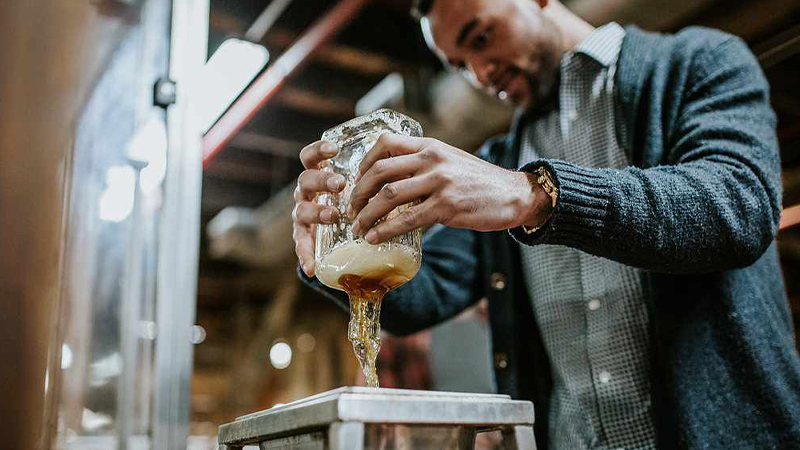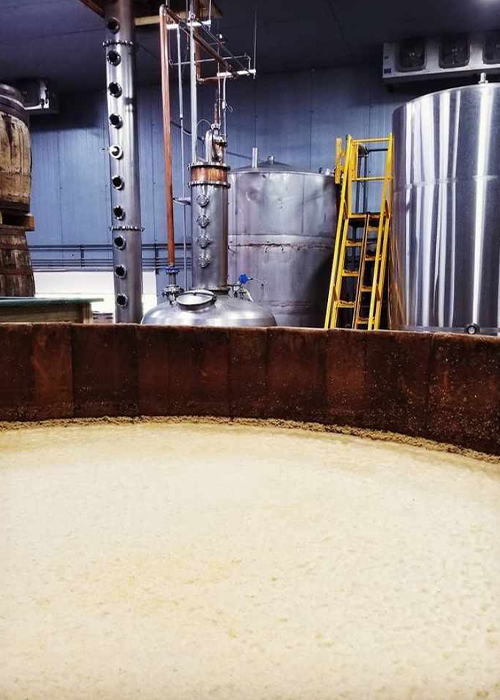Bourbon: It’s about as American a drink as apple pie is a food. For the well-known liquor to earn its name, it must be composed of 51 percent corn, aged for at least two years in a new charred oak barrel, bottled at 80 proof or higher, and — this part is important — produced in the United States.
The country of origin distinction came from a 1964 congressional resolution that declared bourbon whiskey as “a distinctive product of the United States that is unlike other types of alcoholic beverages, whether foreign or domestic.” Ever since, it must be made in the U.S. in order to legally bear the name “bourbon.”
But how, exactly, did the U.S. history of bourbon become as rich as the beverage?
Don’t miss a drop!
Get the latest in beer, wine, and cocktail culture sent straight to your inbox.
The story begins in the 1700s, when settlers first made their way into the southern U.S., particularly Kentucky (where a whopping 95 percent of the world’s bourbon is made). The land was well suited to grow corn, and the crop remains a staple in modern-day Kentucky agriculture. Many settlers brought previous whiskey-distilling expertise with them from their homelands, but they had to get creative with their methods in the U.S. Since corn was what was available, that’s what they used. The grain lent itself well to the development of a unique, corn-based version of whiskey. Thus, bourbon was born.

As the story goes, the bourbon industry began to boom in large part due to the fertile Kentucky terrain and dedicated families who passed the craft on through generations. Given the state’s rich bourbon history, a Kentucky representative named John C. Watts was the one to propose the congressional resolution in 1963. His support helped cement the state’s role as a key producer in the industry and a fierce proponent of the value of U.S.-made whiskey. The resolution was adopted shortly thereafter, in 1964.
Good marketing played a key role in helping bourbon earn the “distinctive product” title. One major figure behind the scenes was Lewis Rosenstiel, a domineering businessman and the founder of one of the biggest liquor corporations in the mid-1900s, Schenley Distillers Corporation. He experienced what could have been a career-ending misstep during World War II, when the company produced a large excess of bourbon after Rosenstiel mistakenly predicted the war would cause a bourbon shortage. With a precarious bourbon supply and demand imbalance, industry collapse seemed possible.
Rosenstiel wasn’t one to give up, though. He used his business and marketing prowess to turn things around — partnering with lobbying groups to buy time to sell the bourbon and leading the charge for successful overseas campaigns. Rosenstiel’s bourbon not only sold; his techniques caused bourbon in general to skyrocket in popularity across the globe. As demand boomed, one of his lobbying groups, Bourbon Institute, sowed the seeds for a “distinctive product of the United States” resolution. Between Roesentiel’s marketing successes and those of his lobbying groups, by the time the 1964 resolution hit the Senate floor, bourbon’s importance to the U.S. was clear. The bill passed with ease.

In 2007, another bourbon-related congressional resolution passed. This one was sponsored, yet again, by a Kentucky senator — this time, Jim Bunning. The bill took bourbon’s name as a ‘‘distinctive product of the United States” one step further, deeming the drink “America’s Native Spirit.” What’s more, it officially established September as National Bourbon Heritage Month, a month dedicated to celebrating bourbon’s storied history and heritage in the U.S.
Today, bourbon has solidified itself as a valuable global product. $846 million of bourbon and other whiskeys were exported by the U.S. in 2020, while over 28 million 9-liter cases were sold domestically in 2020 — amounting to over $4.3 billion in additional revenue.
There’s no arguing that bourbon, and the stories behind it, are distinctly American.


